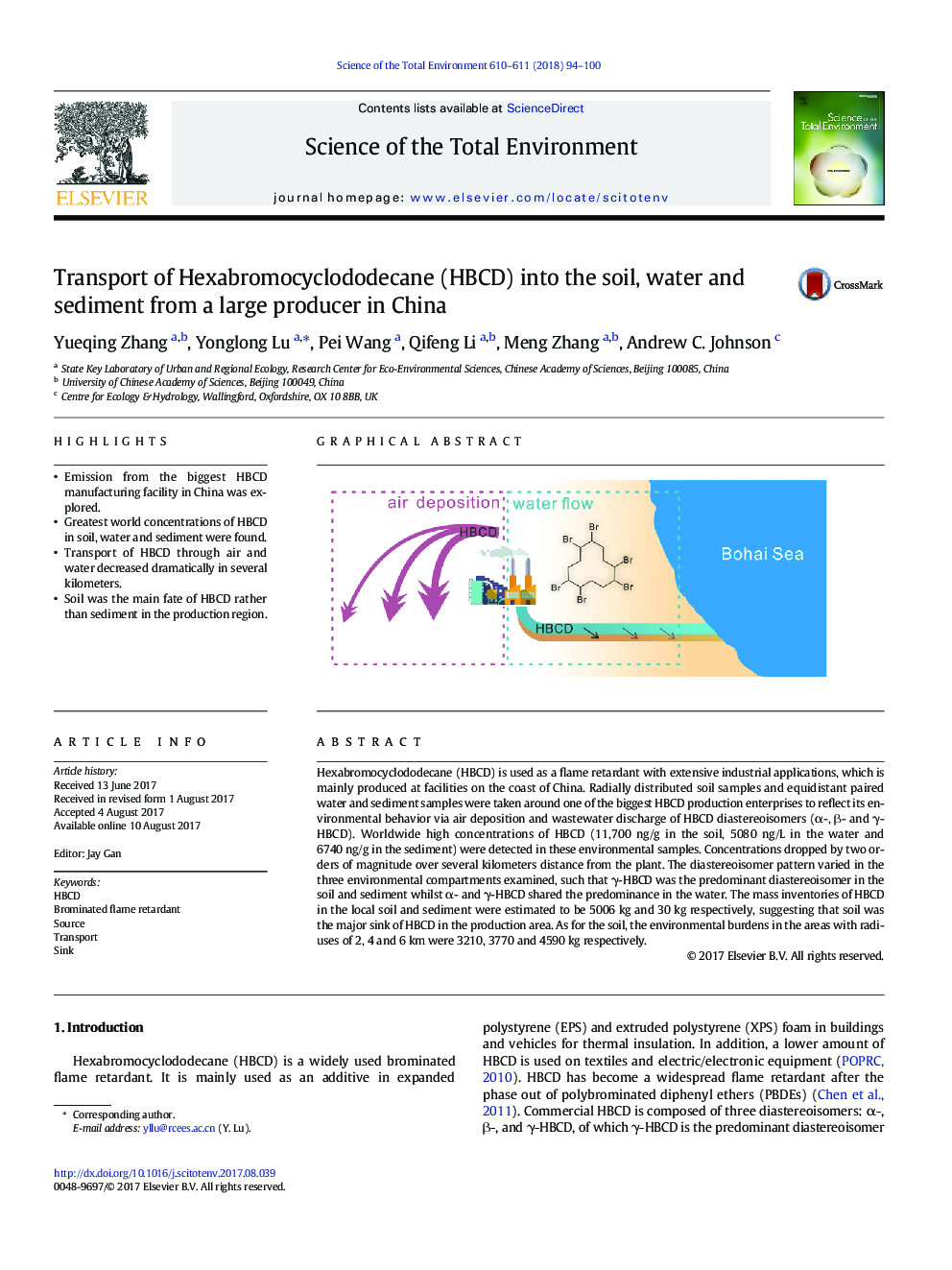| کد مقاله | کد نشریه | سال انتشار | مقاله انگلیسی | نسخه تمام متن |
|---|---|---|---|---|
| 5750176 | 1619692 | 2018 | 7 صفحه PDF | دانلود رایگان |

- Emission from the biggest HBCD manufacturing facility in China was explored.
- Greatest world concentrations of HBCD in soil, water and sediment were found.
- Transport of HBCD through air and water decreased dramatically in several kilometers.
- Soil was the main fate of HBCD rather than sediment in the production region.
Hexabromocyclododecane (HBCD) is used as a flame retardant with extensive industrial applications, which is mainly produced at facilities on the coast of China. Radially distributed soil samples and equidistant paired water and sediment samples were taken around one of the biggest HBCD production enterprises to reflect its environmental behavior via air deposition and wastewater discharge of HBCD diastereoisomers (α-, β- and γ-HBCD). Worldwide high concentrations of HBCD (11,700 ng/g in the soil, 5080 ng/L in the water and 6740 ng/g in the sediment) were detected in these environmental samples. Concentrations dropped by two orders of magnitude over several kilometers distance from the plant. The diastereoisomer pattern varied in the three environmental compartments examined, such that γ-HBCD was the predominant diastereoisomer in the soil and sediment whilst α- and γ-HBCD shared the predominance in the water. The mass inventories of HBCD in the local soil and sediment were estimated to be 5006 kg and 30 kg respectively, suggesting that soil was the major sink of HBCD in the production area. As for the soil, the environmental burdens in the areas with radiuses of 2, 4 and 6 km were 3210, 3770 and 4590 kg respectively.
181
Journal: Science of The Total Environment - Volumes 610â611, 1 January 2018, Pages 94-100